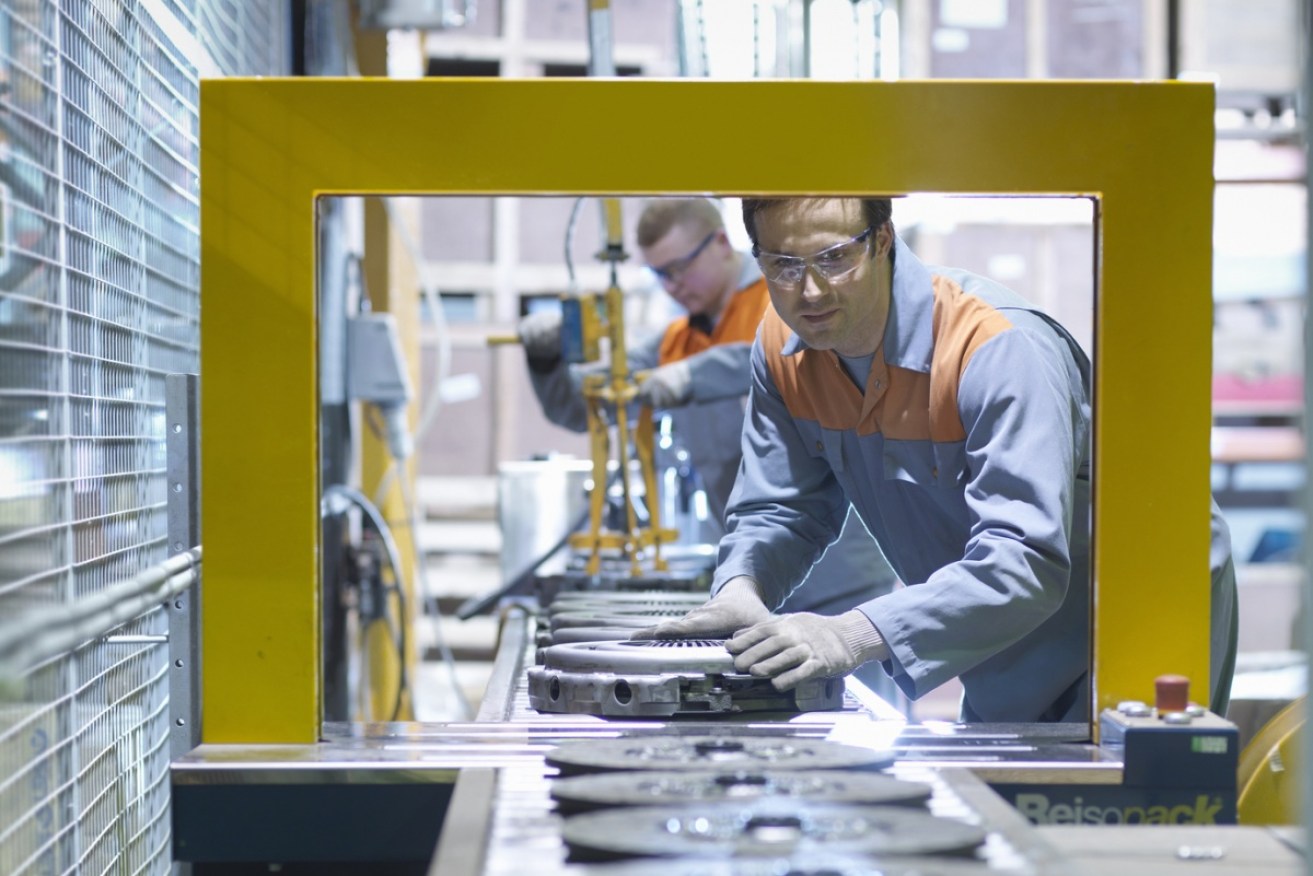Voters want a ‘Made in Australia’ boom and a little vision could make it happen


Auto manufacturing is ending, but a sophisticated parts supply chain remains. Photo: Getty
To a certain kind of economic thinker, this week’s National Manufacturing Summit is all hot air – everyone knows we have no competitive advantage in making things, right?
Well that’s exactly the misconception the summit has been set up to address.
As the summit’s host, The Australia Institute, puts it in a new report: “The stereotypical assumption that Australia cannot successfully participate in international manufactures trade – but instead should focus on a ‘comparative advantage’ rooted in natural resources – is increasingly questioned.”
The reasons for rethinking those assumptions are numerous.
The most obvious is the lower Australian dollar which makes our ‘high-cost jurisdiction’ substantially less costly.
But there are plenty of other factors at work. The report, Manufacturing: A moment of opportunity, argues that the nature of manufacturing itself has changed.
The logic that factories would inevitably shift to nations where labour was cheapest has been challenged by new technologies – everything from advanced robotics, to sophisticated logistics tracking and 3D printing.
The report argues that in order to succeed “industries will need to exhibit greater reliance on innovation, customisation, and specialisation than did mass production industries of the past”.
Big and beautiful
It’s not only small, nimble businesses that can compete in the changed environment – ‘mass production’ models can flourish too, though they still face strong headwinds.
Key among these are energy costs, which have been pushed up by the ‘gold plating’ of power networks, as well as the instability of the ‘carbon wars’ initiated by Tony Abbott in 2009.
That era looks to be ending with the sensible road map to lower energy costs, and lower emissions, set out in the Finkel Review.
If Dr Alan Finkel’s advice is heeded, a new wave of energy investment will add to the momentum of the lower Aussie dollar, to help attract much needed investment from abroad.
That’s important, because, as the Australia Institute report notes: “Capital spending intentions in the sector remain suppressed.”
That’s also where the federal government can help. While Australia is bound by numerous free-trade deals, like any other nation there’s a lot it can do ‘behind the border’ to kick start manufacturing.
The Australia Institute sees three key ways in which this can be done:
- by encouraging manufacturing ‘clusters’ – yep, just like the ones disrupted by the Coalition’s decision in 2013 to chase the major auto manufacturers out of Australia,
- by changing procurement regulations, to make “public agencies in defence, transportation, energy and other key areas” into major buyers of Australian products; and
- by helping “promote Australian manufactured exports” as the international trade environment goes through rapid changes caused by the Trump and Brexit ructions.
Twilight of the ideologues
By now a certain kind of economic thinker will be tearing out their hair – they may even have to take the day off and drive from their comfortable office to their comfortable home to have a little lie down.
And that is just the point. Textbook theories of competitive/comparative advantage can end up leaving tens of thousands of Australians without any comfort at all – no job or prospect of that comfortable home.
One of the key points being driven home by the Australia Institute is that manufacturing jobs tend not to be insecure boom-bust roles: “… the manufacturing sector continues to demonstrate superior outcomes in terms of job quality, stability, and compensation.
“… the incidence of part-time work in manufacturing is less than half that in the labour market as a whole, a smaller proportion of workers is paid at the minimum rates specified in modern awards, and average weekly earnings are about 10 per cent higher than in the economy as a whole.”
Those arguments gel with voters’ instincts. Polling included in the report shows that 76 per cent of voters agree that success in global trade requires strong manufacturing exports, and 67 per cent disagree that government support for manufacturing is a waste of taxpayers’ money.
That opens up an opportunity for either side of politics to get behind a recent jobs ‘turning point’. From the onset of the GFC in 2008, around 200,000 jobs were shed across the sector, but that has now reversed – 40,000 were created last year.
But getting behind manufacturing entails a cognitive leap – from seeing the economy as a simple textbook exercise in identifying competitive advantage, to one of weighing up the wide-ranging benefits of being a nation that makes things.
Voters have got their heads around that one. Now it’s time for the politicians to catch up.








